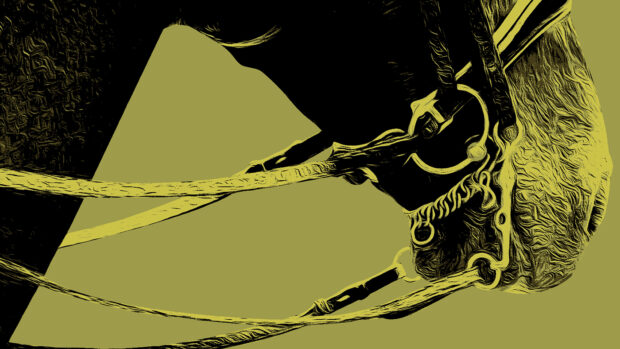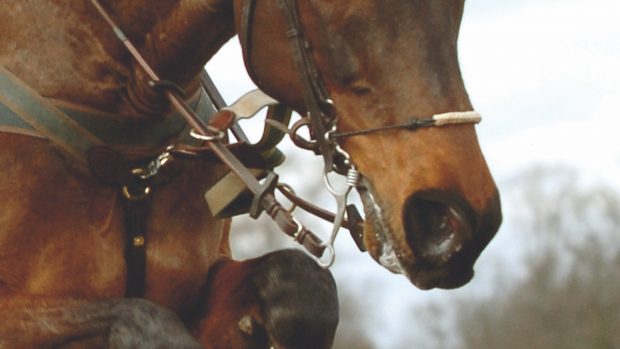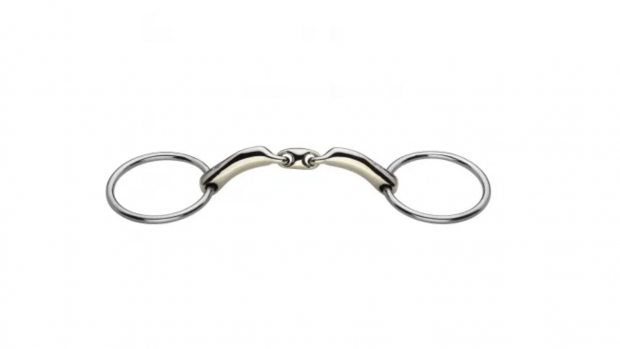SHOW producer Vicky Hesford was seen training at home with a bit that looks like a curb chain. H&H finds out what it is called and what it is for.
What is it?
THE Chain Link is a specialist bit and, although it may look severe, when used by professionals and fitted correctly it is not.
Neule Scheule’s bitting expert, Heather Hyde, receives many enquiries about the bit but does not sell it via the internet because she needs to know that it is being used for the right reasons. She will discuss the bit fully with the customer to ensure it is the correct one for the level at which they are working and the problems they are experiencing.
“The bit must only be used by an experienced rider on a horse that fully understands the aids and responds instantly to them,” says Heather, who has seen the Chain Link solve bitting problems for a number of horses with whom she has worked closely.
What horses does it suit?
THOSE who have mouth conformation that means there is not enough room for a rigid metal bit and do not perform well in a hackamore.
Lucy Nicholas from The Saddlery Shop in Devon says: “It would be ideal for a horse with a large tongue or fleshy lips, or those with a tendency to put the tongue over the bit. Horses with a general lack of space in the mouth will feel like he has a gobstopper in his mouth with a conventional bit and want to get the tongue free.”
How does it work?
“IT’s actually quite similar to the Waterford in that it bends in every direction,” explains Heather Hyde. “In the same way as you would twist a curb chain so that the links lie flat in the curb groove, you must ensure it lies completely flat across the tongue — the pressure is completely even and, when used sympathetically, can help with downward transitions.”
“It should help prevent leaning and would be an accurate bit to ride in as you can manipulate one side of the bit and not the other due to the numerous links which give good communication,” says Lucy Nicholas.
“It is a bit that deserves to be used far more in knowledgeable hands.”
Who uses it?
CHESHIRE-based show producer Vicky Hesford discovered the Chain Link bit through her fiancé, show jumper Andrew Davies, and buys hers from Equiport.
“It’s a great education tool, especially on horses that don’t like the chunkiness of a conventional bit. I only use it when schooling at home,” says Vicky, who uses the bit as a snaffle but is thinking of having it made as a pelham.
“Horses can’t lean on it and obviously it suits some more than others, but I haven’t come across a horse that hasn’t liked it,” she adds.
“It produces a lovely soft mouth because the horses play with it but can’t grab hold of it.”
Where can I buy one?
NEULE Scheule sells the Chain Link for £39.50.
Contact: Neule Scheule Advice line Tel: 01642 710627 www.nsbits.com
Equiport sells versions from £55.
Contact: Equiport Tel: 01606 351685 www.equiport.co.uk
The Saddlery Shop sells 5-5 1/2in for £47.50.
Contact: Tel: 01409 220315 www.thesaddleryshop.co.uk
This Q&A was first published in Horse & Hound (18 October, ’07)


